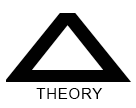






 |
| Tel: +61 423 601 604 - Email: architect@andrewtboyne.com |
|
BOX THEORY Dissolution of the Box Definitions |
Definitions If we are to accept the general premise of Box Theory; that the breaking down of the traditional definitions of space is of great benefit to the occupants, then we must understand how space is typically defined. To understand the way architecture traditionally defines space, we must break it down into its most basic components. A work of architecture can be understood simply as a collection of distinct elements, brought together to define space. In a simplistic interpretation, we might understand these elements to be walls, floors, and ceilings; each element having its own identity and volume. Yet, our understanding of space is never really defined by volumes. We are unable to sense volume visually, but instead understand a volume as a collection of surfaces. By looking at a wall, we can understand that it has a surface, we can understand it has a height and a length, but have no sense if the wall is solid or hollow, or how thick it is. We must then understand that from an experiential perspective, the most elementary component of architecture is the surface. In Box theory, architecture of all types and styles can be seen to be made up of three distinct surface types; the Positive Surface, the Negative Surface and the Ghost Surface.  The Positive Surface Any surface that defines space can be considered as a Positive Surface. The Positive Surface is by far the most common surface condition in almost all architecture, and can be manifest in common architectural elements such as ceilings, walls, and floors. Positive surfaces may however come in any shape, and form any part of a building, as long as the surface plays a part in defining the limits of space. Fig 5. shows the Positive Surfaces of a Broken Box arrangement coloured in red. The Negative Surface Any Surface that does not define space can be considered as a Negative Surface. These surfaces are far less prevalent, but are the life blood of Box Theory. In the attempt to dissolve the definitions of interior space, Negative Surfaces allow the introduction of building elements, without obstructing the free flow of space. While any surface can theoretically be Negative, the negativity of the surface can be made or broken according to its interactions with other surfaces, and subsequently creating negative surfaces requires very careful consideration. Fig 6. Shows two columns in red that are acting as negative surfaces; they play no part in defining the confines of the interior space. The Ghost Surface The Ghost Surface defines space in much the same way as a positive surface, but does not actually have any physical manifestation. It is not made up of building elements, but exists as a product of the relationship between building elements. A Ghost Surface exists where there may be an apparent end to the flow of space, but that end is not defined by a physical surface. In Fig 7. The identical roof and floor planes create a definition of space around their peripheries that seems to span between their edges; this is a Ghost Surface. A more simplistic way to visualize a Ghost would be to imagine a large room with an opening in it where a door may once have fitted. The opening technically is totally unobstructed by any surface, yet the interior sense of the space does not extend past the open doorway. In this case a Ghost Surface exists across the opening, and is the product of the arrangement of the other surfaces of the room. Now, if we reconsider the Dissolution of the Box, discussed earlier, it becomes evident that the spaces within the Perforated Box (Fig 1.), The Broken Box (Fig 2.), and the Exploded Box (Fig 3.) are all defined by different combinations of Positive and Ghost Surfaces. This is not the case for the Undefined Space Model (Fig4.). If a single element is isolated in space, it cannot be defining or confining the space that flows around it, and must always be made up of negative surfaces. Because the Undefined Space model shown in the previous discussion consisted of a series of these negative surfaces, that had no obvious relationship to each other, there cannot be any definition of space. The consideration of isolated volumes in space brings up a very interesting secondary concept. If we consider that any element isolated in space must be made up of negative surfaces, and use the example of the Perforated Box (Fig 1.), we can understand that if each wall existed individually they too would be made of negative surfaces; yet they are most certainly positive. It then becomes clear that the creation of Positive Surfaces is only achieved through an obvious relationship with other surfaces. The wall surfaces in the example are connected to each other, and to the floor and ceiling surfaces. It is this connection which makes them positive. The confinement of space via positive surfaces is then not inevitable, but more the product of architectural decisions which set up relationships between surfaces. |